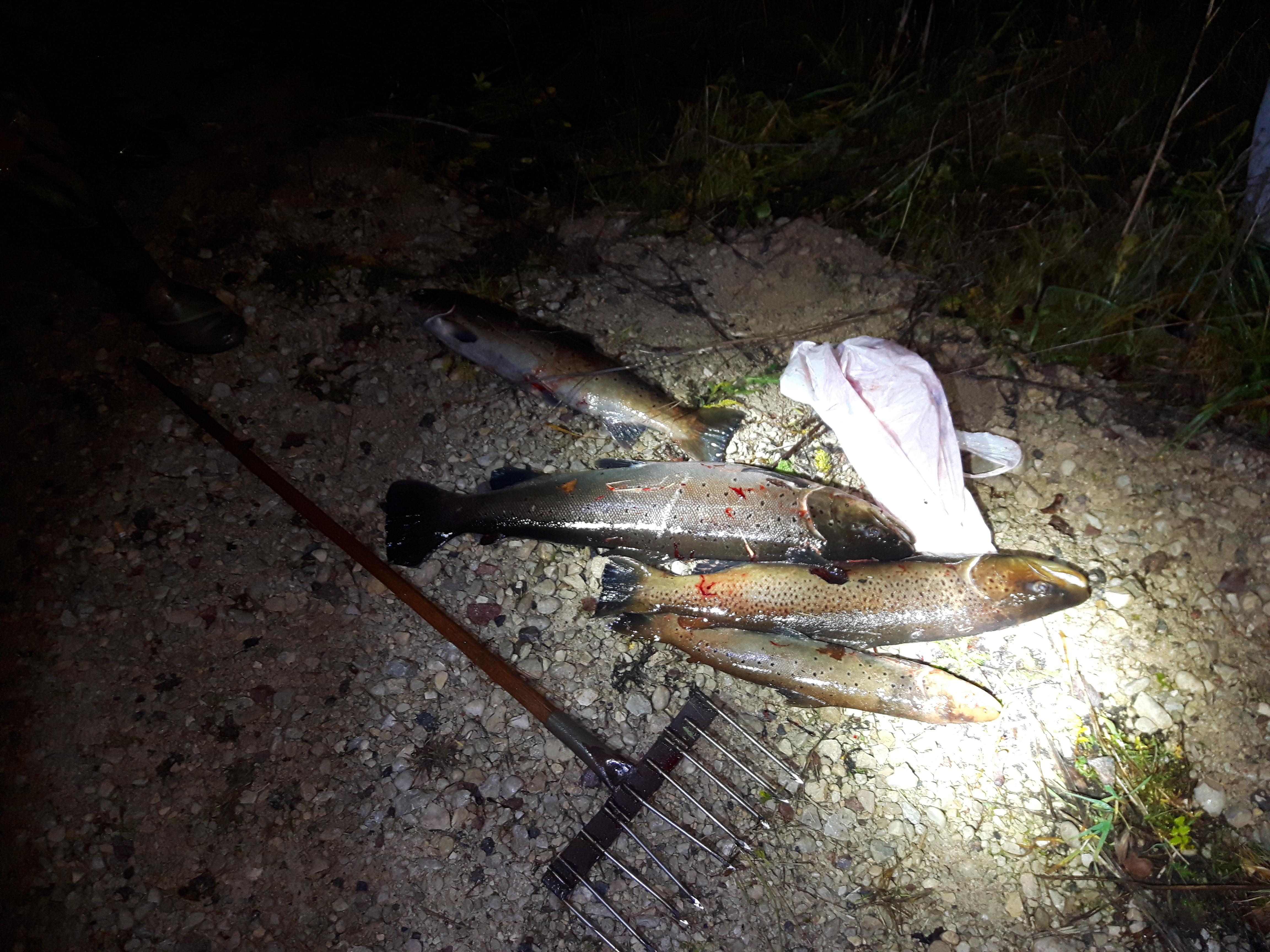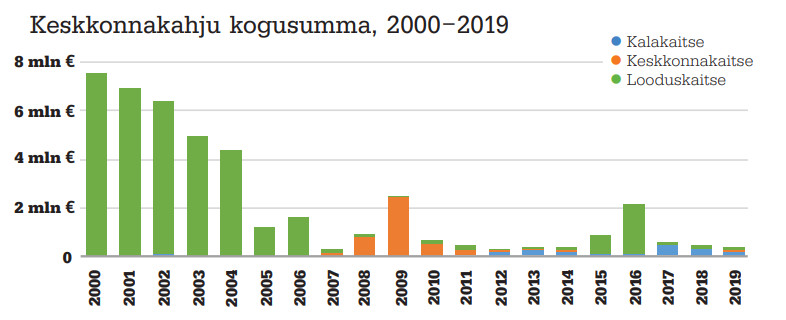Environmental supervision is ensuring the procedure established in legislation is followed in the use of the natural environment and resources
Environmental supervision is ensuring the procedure established in legislation is followed in the use of the natural environment and resources. This is often a preventive check to prevent infringements or to detect them at the earliest possible stage. The purpose of environmental supervision is to prevent environmental damage.
Environmental supervision in Estonia is mainly performed by the Environmental Board (until 2021, the Environmental Inspectorate). Supervision is carried out in all areas of the environment (forest, earth, and fish protection, waste management, ambient air problems, nature conservation), but certain functions (such as supervising compliance with environmental protection and use decisions established by local governments) are also performed by local governments.

Environmental supervision is ensuring the procedure established in legislation is followed in the use of the natural environment and resources. This is often a preventive check to prevent infringements or to detect them at the earliest possible stage. The purpose of environmental supervision is to prevent environmental damage.
Environmental supervision in Estonia is mainly performed by the Environmental Board (until 2021, the Environmental Inspectorate). Supervision is carried out in all areas of the environment (forest, earth, and fish protection, waste management, ambient air problems, nature conservation), but certain functions (such as supervising compliance with environmental protection and use decisions established by local governments) are also performed by local governments.
In addition to environmental misdemeanours, the Environmental Board has the right to investigate criminal offences in this field. Depending on the act, environmental violations are dealt with in administrative proceedings (administrative proceedings are intended to bring the situation into line with the law, such as ordering the removal of an illegal building or waste pile), misdemeanour procedures (for minor infringements), or criminal proceedings (for major infringements).
Based on its work organisation, the Environmental Board divides the areas of supervision into two:
- environmental protection;
- nature conservation.
The number of misdemeanour and criminal proceedings related to environmental breaches has decreased compared to the past in recent years, but the share of other coercive measures has increased significantly. This means that instead of punishment, other methods are used more to ensure that everything is done in accordance with legislation – a precept, a memorandum, a warning.
Statistics on environmental breaches [1]
| Year | Number of breaches* | Number of precepts |
|---|---|---|
| 2015 | 2816 | 38 |
| 2016 | 2147 | 31 |
| 2017 | 2035 | 63 |
| 2018 | 1612 | 142 |
| 2019 | 1778 | 197 |
| 2020 | 2175 | 172 |
| 2021 | 1600 | 140 |
| 2022 | 1447 | 192 |
* Breaches include misdemeanour proceedings registered during the year and fishing gear of unclear ownership detected during fishing surveillance.
The number of violations in the field of fishing has been the highest over the years and the problems recur year after year – fishing gear does not meet the requirements, fishing gear is not marked to cover predatory fishing, undeclared catches are attempted to be brought ashore.
Deforestation is receiving increasing public attention, and in connection with that, there are many appeals asking for the legality of felling to be confirmed. However, large-scale forest robberies and thefts no longer take place; forest-related breaches are mostly related to carelessness (for example, felling has accidentally taken place on an adjacent property). There are, however, also cases of not having a felling notification.
Breaches in the field of hunting mostly have to do with safety. Many hunting accidents could be prevented if gun safety requirements were observed.
Among the breaches of the Nature Conservation Act, the biggest problems are driving a motorised vehicle in a place not intended for that purpose and building in a building exclusion zone.
One of the priorities in recent years has been to strengthen the supervision of waste management. The biggest problem is construction and demolition waste, which is generated over two times more than mixed municipal waste.
Environmental damage and the ‘polluter pays’ principle
Some breaches also cause environmental damage. They are dealt with on the basis of the ‘polluter pays’ principle and are regulated by the Environmental Liability Act. The ‘polluter pays’ principle means that the polluter must remedy the environmental damage – they must restore the state of the environment that existed before the damage was caused. For example, if someone destroys a valuable community within the meaning of the Environmental Liability Act, they pay a fine and are obliged to restore the former state.
However, for the purposes of the law, only damage caused to certain specific environmental elements, such as protected habitats and bird, animal, and plant species, areas protected under the Nature Conservation Act, surface and groundwater, and soil, is considered environmental damage. Damage must also be significant – for example, affecting the viability of a habitat or species or changing the status of surface and groundwater. The Minister of the Environment has issued a regulation defining the habitat and species within the meaning of the Environmental Liability Act.
Environmental damage and its threat are identified by the Environmental Board, which may involve experts to determine the extent of the damage. In addition, the Environmental Board is responsible for ensuring that persons and companies that have caused or risked causing environmental damage take the necessary prevention and remedial measures.
Example of environmental damage is catching salmon during the prohibited season or in a prohibited way. Such fishing can be very expensive for the fisherman, leading to large fines and compensation for environmental damage. In the case of serious infringements of fisheries rules, the damages are fivefold, i.e. 480 euros for one salmon and 150 euros for trout. However, if fish are caught in a way that is particularly damaging to fish stocks (such as by electricity or poison), the price per fish is ten times higher.
Over the last couple of decades, the biggest environmental damage in Estonia has been caused by forest fires: for example, 17.5 million euros in 2006 and 14 million euros in 2009. However, statistics show that, in general, environmental damage has decreased year on year: while in 2000, environmental damage amounted to 8 million euros, in 2019, a total of 420,074 euros in damage was identified [2].

Keskkonnakahju kogusumma, 2000–2019 – Total environmental damage 2000–2019;
mln € – million euros;
Kalakaitse – Fish conservation;
Keskkonnakaitse – Environmental protection;
Looduskaitse – Nature conservation
Links:
_________________________________________________________________________
[1] https://keskkonnaamet.ee/jarelevalve-teavitamine-1247/jarelevalve/uuringud-statistika
[2] Keskkonnajärelevalve aastaraamat 2019